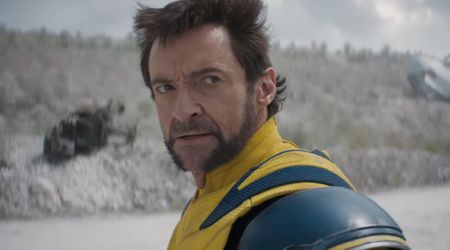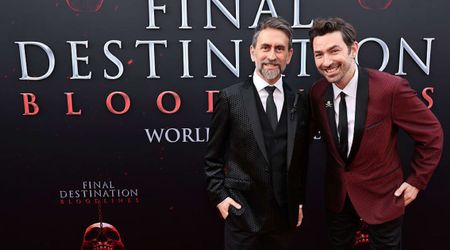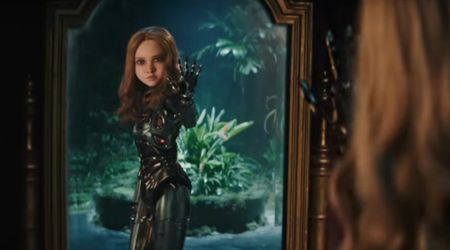Gotham City: From gritty realism to gothic horror, all the iconic forms Batman's home has taken in film and television

They say the city shapes its citizens just as much as the citizens shape the city. So what does that say about a city whose most iconic citizen is a man who dresses as a bat to wage war on crime?
Over his 80 years in print, Batman has been defined and redefined by a variety of writers, artists, and filmmakers but one thing that never changes is his passionate love for Gotham City.
It is the city that took away Bruce Wayne's parents, that bred twisted criminals like the Joker and Two-Face, but it is also an iconic landscape, a skyline that has been etched deep into our cultural subconscious even though it might not be a real place.
Since the first time Batman appeared on film, there have been many reimaginings of Gotham City — some have visualized it as a living nightmare while others have cast Gotham as a beacon of hope shining from the depths of darkness.
Gotham is dirt, Gotham is violence, Gotham is crime, but for Bruce Wayne, Gotham is home — it is his dark mirror, his battlefield, and his one true love.
Tim Burton's Urban Hell
The most iconic vision of Gotham was indisputably the horrifying hell-scape that was depicted in Tim Burton's 1989 movie 'Batman'. This dark, gothic vision put a surreal spin on the city, one that was so well appreciated that its designer Anton Furst won an Oscar for his work on the film.

Burton's Gotham doesn't look like a city that was built by man. In fact, the buildings almost look like they erupted from the Earth, creating an urban landscape of distilled terror.
The architecture itself looks like a nightmare brought to life, with tall gothic towers, grimy walls, and a general air of violence and evil. Burton's Gotham was by no means the last word on what the city could be but it has certainly been a major influence on all the Gothams that came since.
Every time you watch the movie, it's hard to imagine how someone could bear to live in this infernal city; unless you're Batman, of course.
Joel Schumacher's Punk Rock Gotham
'Batman Forever' and its sequel 'Batman & Robin' may not be the most popular movies to feature the Dark Knight but that's not to say its Gotham was a letdown.
Indeed, even though the movie itself has aged terribly (and it wasn't particularly great in its own time either), its vision of the city put a unique spin on Gotham that was very enjoyably '90s.
Neon lights and gargoyles clash in a perfect blend of punk and classical aesthetics creating a visual experience that takes the surrealism of Tim Burton's vision and kicks it up a notch.
In the 2005 documentary 'Bigger, Bolder, Brighter: The Production Design of Batman & Robin', Barbara Ling, who designed the city's look for both movies, described her vision of Gotham as "a World's Fair on ecstasy" and that perfectly sums up this mad version of the iconic city.

The Real-world Gotham of Christopher Nolan
Nolan's 'Dark Knight' trilogy of Batman films stripped away most of the fantastical horror elements from Gotham and recast it as a real place over-ridden by crime. The city itself bases itself on Chicago instead of New York, which has historically been the basis for most versions of Gotham.
There are fewer curves, more straight lines, less gothic spires, more Romanesque columns and overall you get the impression that this is a real city somewhere, not some hellish nightmare.
The city itself is pretty well-organized with train lines zig-zagging across the skyline like an external nervous system but there's still graffiti and dirt all over, showing us that this is a place of order that has fallen into disrepair and chaos.
The Gotham of 'Gotham'
Fox's 'Gotham' series takes some inspiration from Nolan's version of the city but it grounds it even further by giving it a gangster-movie aesthetic.
The city has a certain darkness to it but nowhere near as much as in Burton's or Schumacher's versions of Gotham, which is understandable considering the show focuses on Jim Gordon instead of Batman.
The city isn't nearly as filthy or as impressive as we're used to seeing it portrayed, though there is still plenty of violence and corruption to go around. This Gotham is yet to truly descend to the depths it would one day reach but we do see hints of the darkness to come.
Gotham, The CW edition
The city of Gotham that appears in The CW's 'Batwoman' series shifts the location all the way to Vancouver but that doesn't take away from the quality of the city's depiction.
It's still quite dark and gloomy and we actually see some influence from Burton's vision, especially in its depiction of Arkham Asylum, though it's nowhere near as horrifying.
'Batwoman' actually manages to blend some of the gothic elements from Burton's Gotham with the realism of Nolan's work.
This Gotham might not be an art piece like some of its predecessors but it is still artfully constructed and arguably a better version of the city than the one that we saw on 'Gotham'.
The City of Garbage and Clowns

Todd Phillips' 'Joker' presents a very different Gotham from the ones we've seen so far. His depiction of the city takes elements from multiple previous iterations.
There's some of Nolan's realism and a bit of a gothic touch but Phillips' biggest contribution to the Gotham skyline actually goes deeper than steel and stone.
There's a certain tension in the air, a dark foreboding of some great disaster that is to come. With bankrupt shops and bankrupt moralities, there's a general idea that this city has gone to the dogs.
It's hellish and dark but stays rooted in reality and the mountains of trash, the barely-functioning trains, and the rabid super-rats make it clear that this is a cancerous city that's slowly but surely crawling to its doom.
In Conclusion, Gotham is...
Each of these works may have given their own take on Gotham but one thing we find in common is a general sense of darkness and doom. It's hard to imagine why anyone would want to live in this city, which in many ways distills all the things we hate about urban life.
So why do people live here? Why does Batman try so hard to save a city that shows no sign that it wants to be saved?
Perhaps we'll never truly know the answer to that mystery but the best explanation we can think of is this: Batman fights for Gotham, loves Gotham, gives his life for Gotham, because in the end, no one else will.
The next Gotham will arrive once Matt Reeves' 'The Batman' hits theaters on June 25, 2021.










